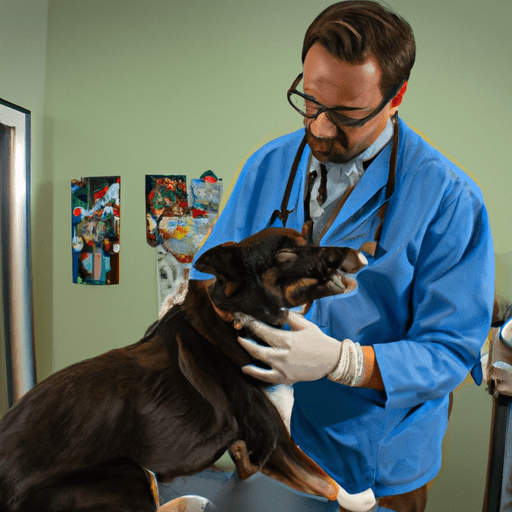As a caregiver to your beloved pooch, it’s crucial to understand all aspects of their health, even the less-than-glamorous ones. One such activity that might seem daunting but is necessary for your furry friend’s wellbeing is anal gland expression. This task, while not the most appealing, is crucial for your dog’s health and comfort. Here’s a step-by-step guide on how to safely and effectively squeeze your dog’s anal glands.
H2: Understanding the Importance of Anal Glands in Dogs
Dogs have two small glands located on either side of their anus. These glands secrete fluid that dogs use to mark their territory. However, these glands can become blocked, leading to discomfort and potential health issues.
- Anal glands that are not emptied regularly can become impacted and infected.
- In severe cases, anal gland issues can lead to abscesses requiring surgical intervention.
As a caregiver, it’s essential to recognize the signs of anal gland issues, such as scooting, licking the anal area, and discomfort when sitting.
H2: Preparing for Anal Gland Expression
Before you start, gather all the necessary supplies. You will need:
- Latex gloves
- Soft, absorbent cloths or paper towels
- A mild pet-safe soap
- Warm water
Make sure to perform the procedure in an easy-to-clean area, as the fluid from the glands can have a strong odor.
H2: The Step-by-Step Process
Follow the steps below to express your dog’s anal glands safely:
- Don latex gloves and position your dog with their backside facing you.
- Lift the tail gently but firmly.
- Locate the anal glands. They are positioned at approximately 4 o’clock and 8 o’clock positions around the anus.
- Gently squeeze the glands, pushing upwards towards the anus.
- Wipe away the expelled fluid with a soft cloth or paper towel.
- Clean the area with mild pet-safe soap and warm water.
Remember, if you feel uncomfortable or your dog shows signs of distress, it’s best to stop and consult a professional.
H2: Aftercare and Prevention
After expressing the glands, monitor your dog for any signs of discomfort or infection, such as redness, swelling, or continued scooting. Consult a vet if these symptoms persist.
Prevention is always the best medicine. Here are some measures that can help prevent anal gland problems:
- Regular exercise
- A high-fiber diet
- Regular vet check-ups
H2: FAQ
Q: How often should I express my dog’s anal glands?
A: It depends on the dog. Some dogs may need their glands expressed monthly, while others rarely need it. Consult your vet for advice specific to your dog.
Q: Can I hurt my dog by expressing their anal glands?
A: If done incorrectly, yes. If you’re unsure, it’s best to have a vet or professional groomer show you first.
Q: What does the fluid from the anal glands look like?
A: It’s usually brown and has a strong fishy odor.
Remember, as a caregiver, your dog’s health and comfort are in your hands. When done correctly and safely, expressing your dog’s anal glands can prevent painful health issues and keep your dog feeling their best.



